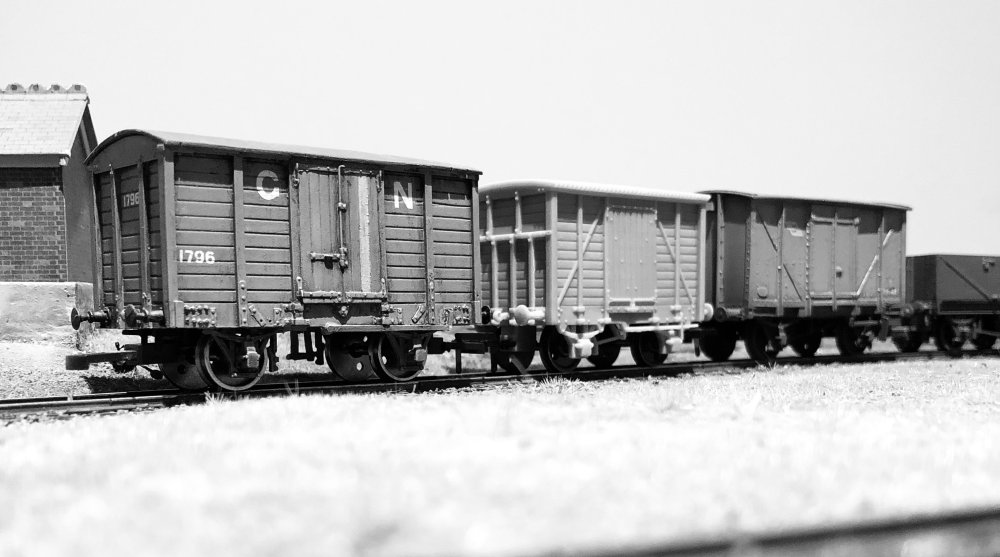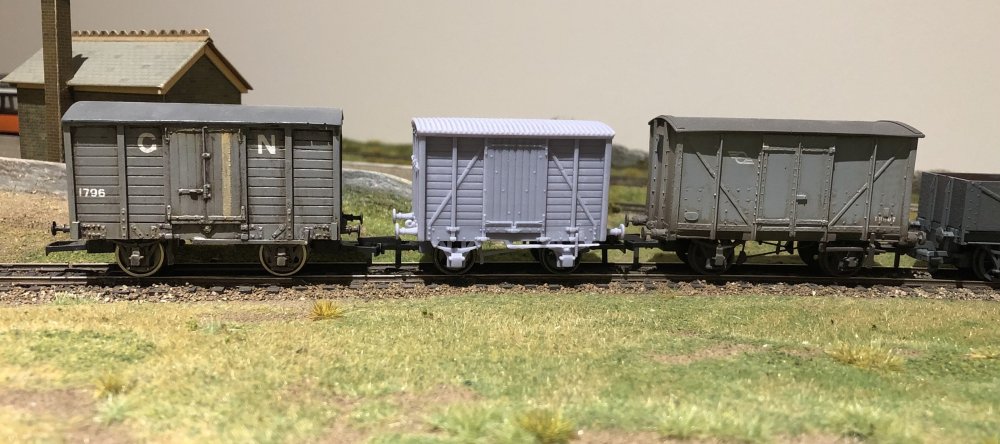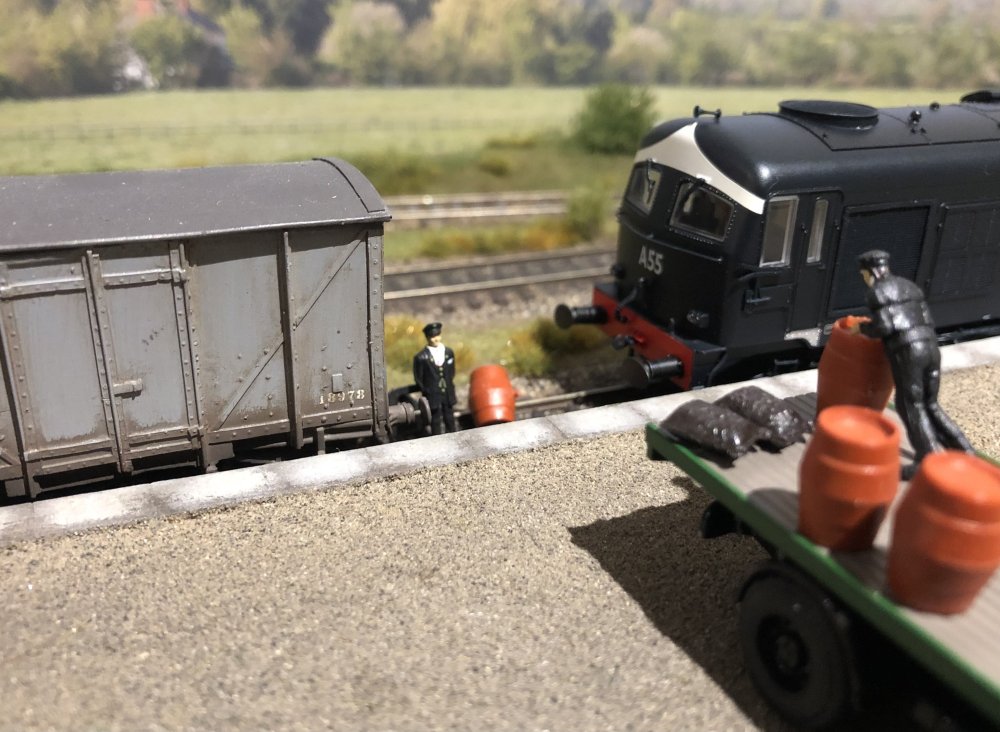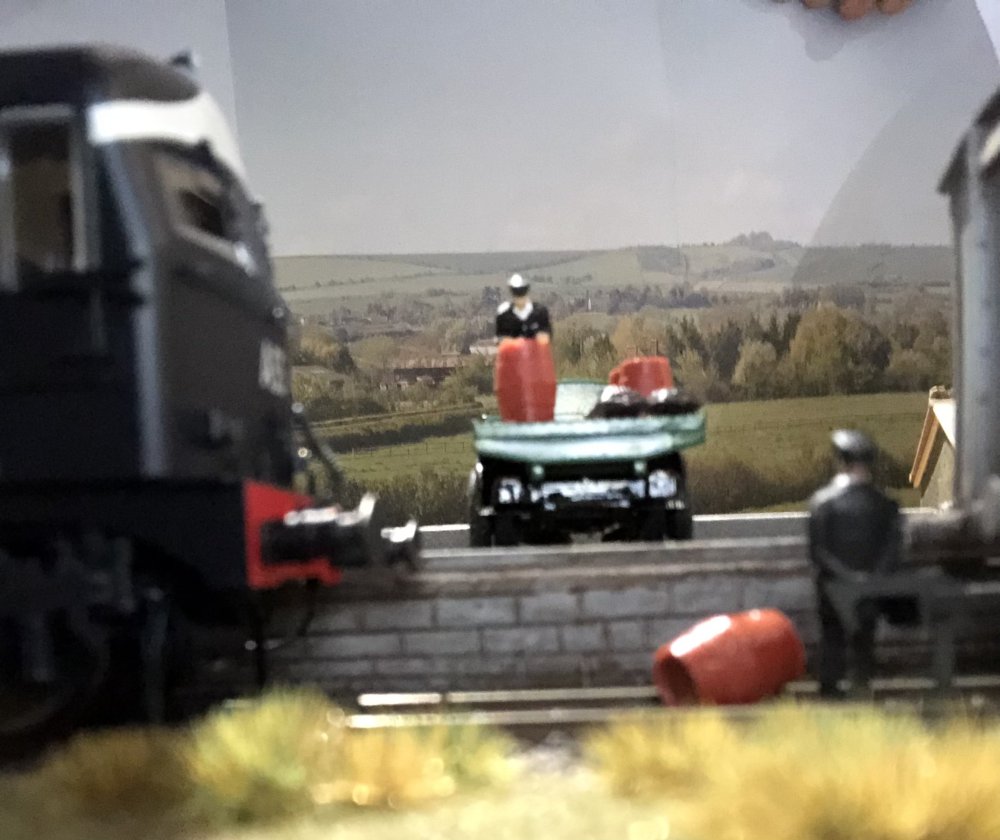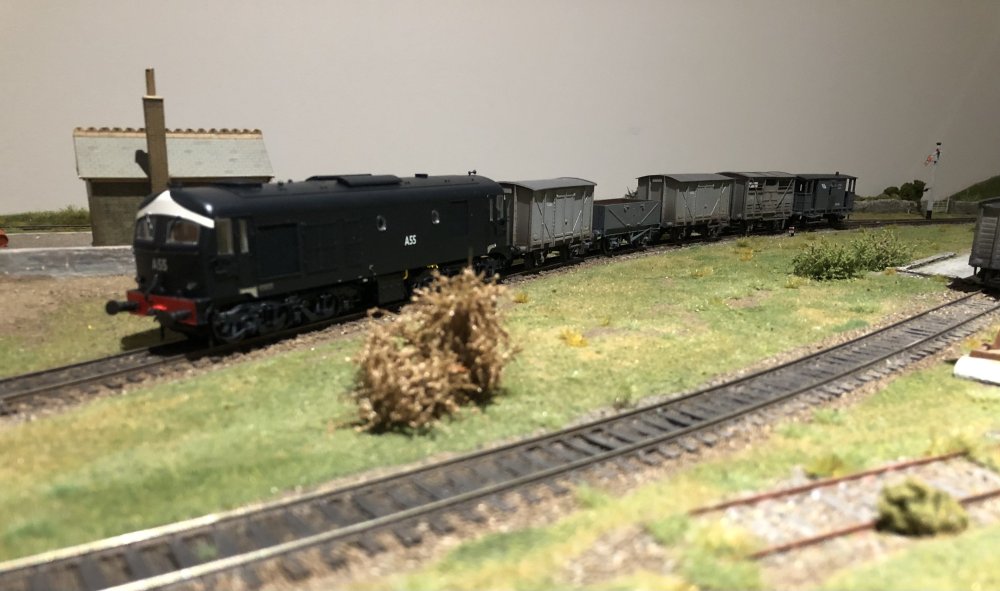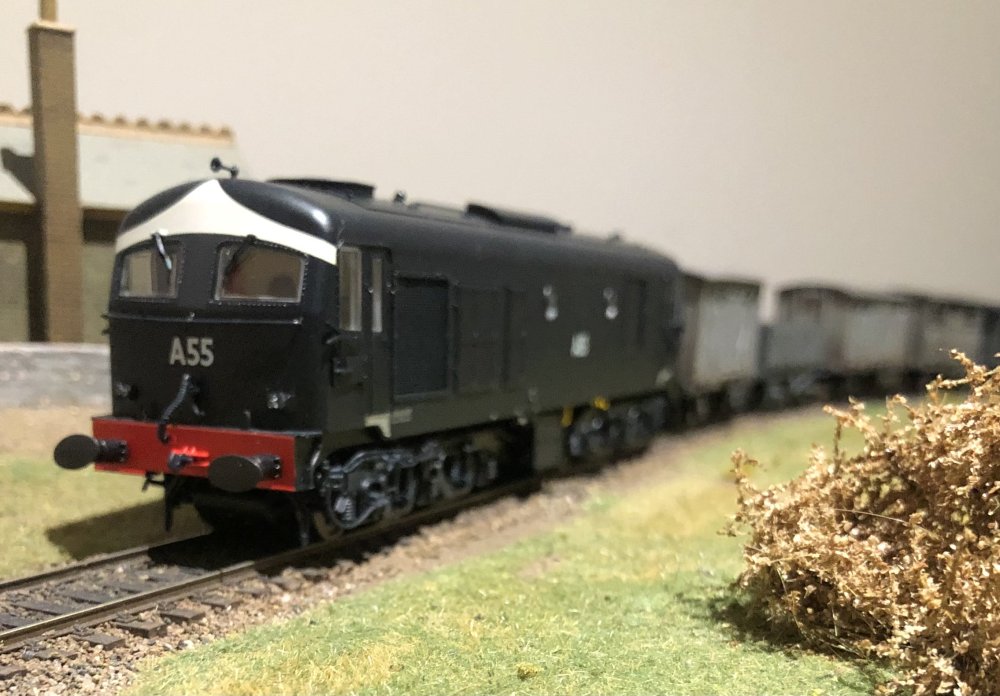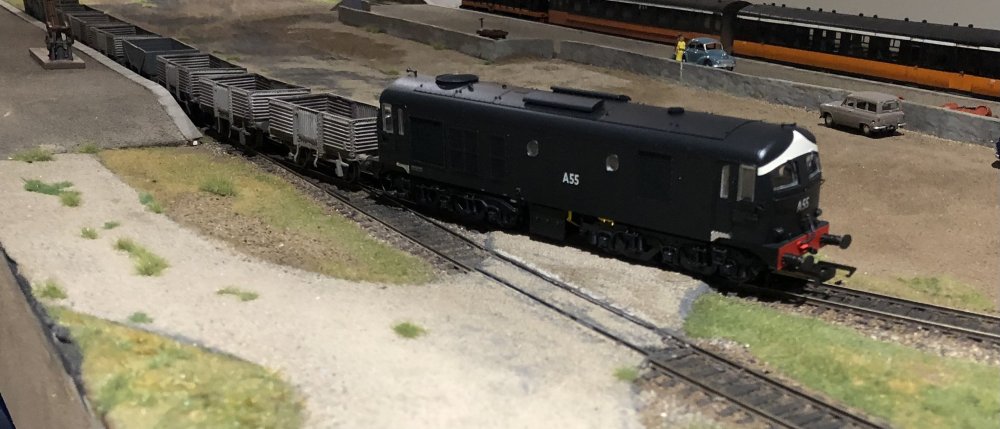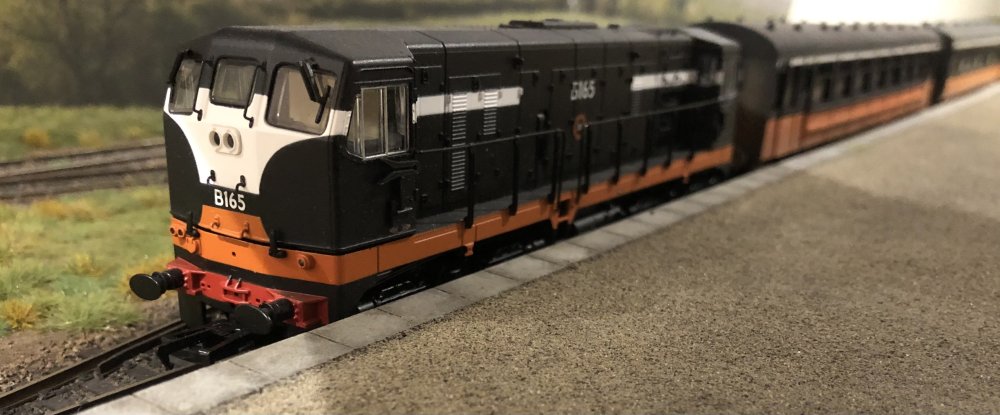-
Posts
15,897 -
Joined
-
Last visited
-
Days Won
394
Content Type
Profiles
Forums
Events
Gallery
Blogs
Community Map
Everything posted by jhb171achill
-
Very true. O'Dea's collection features very many cabins, with and without staff, including many of which (after decades of examining photos of all sorts) I have often never seen any other internal view of. As many others have commented, he also has a strong emphasis on staff in all areas in his phots, just as the late Mac Arnold had in his writings (often to the exclusion of much else!). I spent several days during the lockdown this time last year trawling every single image of his that is online and making notes. Ten years ago I did the same, by examining them on microfilm in the National Archives; it took me almost a week! Superb stuff, very educational.
-
On a railway, much of what we call "weathering" was, in the past, brake dust from brake blocks. Hence the brownish colour of "weathered" rolling stock in photos. I have seen many a photo of a wagon which we would know to be grey, but with a brownish look at least to chassis and maybe ends; a note for the more artistic amongst us!
-
Nice! They're actually already in their initial livery! (OK, very slightly lighter in real life...)... Most never had any other livery, but maybe some 40% of them ended up brown after 1970, for their last few years.
-
CIE mail / parcels / brake coach, to an old GSR design dating from, I think, 1935. Modern bogies on this one, as most of them (there were maybe ten or so in total). The CIE ones were built in 1960, according to Doyle & Hirsch.
-
O'Dea wrote a superb article in the IRRS Journal at the time about his jaunt to Valentia Harbour on the last day - truly a marathon. Was a very nice man to talk to, I met him several times.
-
Yes, by the 1970s, very much so.
-
I remember seeing one in use with steel-sheeted body, but still planked end balconies...
-
Wagons behind an “A” class in silver, green or all-black livery
jhb171achill replied to jhb171achill's topic in Irish Models
Indeed - an important note for modellers of the more artistic variety - the amount of weathering and wear and tear, especially on wagons, cannot be understated. Some of the wagons were so rough looking, they were coated in brake dust - photos of not just these (ALL of which were grey!), but green carriages - would almost suggest to the uninitiated that the whole lot were light brown...... and as for steam engines, if you got a class like the 400s in which some examples were green, some grey and a few black, you genuinely could hardly tell which was which. Crossleys, of course, carried out their functions in between breakdowns under a patina of oil and gunk........ -
Wagons behind an “A” class in silver, green or all-black livery
jhb171achill replied to jhb171achill's topic in Irish Models
That is, in typical Kirley style, absolutely superb, so full of atmosphere, and very much what I would be trying to emulate by degrees! -
Wagons behind an “A” class in silver, green or all-black livery
jhb171achill replied to jhb171achill's topic in Irish Models
Indeed - Senior travelled on the 2nd last one - but didn't take a SINGLE picture! Cattle was the reason that MANY Irish lines got beyond the 1930s, and the main reason that very many, from Draperstown and Dungiven in Co Derry, to Kenmare in Co Kerry lasted at all. ALL of the following - and this is only for starters, off the top'o'me'ead, depended on cattle traffic, many of them lasting almost as long in a derelict state for that one purpose only as they did in full use. Limavady - Dungiven, Draperstown, Mountmellick, Oldcastle, Carrickmacross, Cootehill, Loughrea, Ballinrobe, Ballaghaderreen, Dingle (narrow gauge), Kenmare, Bagenalstown - Palace East, Mitchelstown, Newmarket, Athboy, Edenderry...... and in between there were many, many, many intermediate stations on main lines (places like Ballinasloe being probably the best known - but many others too) which saw almost no use in latter days bar the cattle specials once or twoce a month, or sometimes even less frequently. Don't take that list as anything like exhaustive either! The importance of cattle traffic to Irish railways cannot be overstated, thus for any layout prior to 1960, and many a location between 1960 and 1975 (when the last cattle trains ran) is an essential part of the scene. Like carriages, designs used in Britain were so different that repainted GWR or BR examples just don't cut the mustard if any degree of accuracy is wished for. Up to 1960 all sorts of old relics were used, but CIE went into overdrive building new ones between the end of the 1950s and early 60s, so by 1965 any pre-CIE ones were as far as I know extinct. Prior to that, the Provincial GNR one will cover many a scenario, as it's not hugely unlike some old GSR (or possibly NCC) ones either - after that, the above provincial CIE one is the only show in town. Some even managed to gain the new brown livery after 1970! the last were withdrawn in '75 and assembled mostly in Cork and Dublin where they were burned and the metal bits scraped up and sold for scrap. Strangely, while I stand to be corrected on this, I never saw any being scrapped at Mullingar. At one stage cattle traffic was by FAR the biggest goods traffic in Ireland. We were carrying "beasts", while our neighbours on the "big island" were carrying milk churns and coal.......... Bizarre, almost, that of the single biggest non-passenger traffic ever on THIS entire island, not a SOLITARY complete cattle truck has survived. New build, anyone? -
Wagons behind an “A” class in silver, green or all-black livery
jhb171achill replied to jhb171achill's topic in Irish Models
I recently came across an account of a fair day in the west of Ireland in 1968, at which forty of these were loaded. The gist of the article was that the same event a decade earlier would have loaded 120 of them. This is why there were so many on the railways, but also why they spent a lot of time sitting in sidings. Realism will be added to any 1950s or 1960s layout (or earlier) by having a siding somewhere stuffed with these things awaiting their next turn of duty. I've a couple more on order, in addition to a good few I already have, so that I can make up a 15 or 20 wagon "cattle special". -
Wagons behind an “A” class in silver, green or all-black livery
jhb171achill replied to jhb171achill's topic in Irish Models
Very much so. That type were being built at exactly the same time as the "A"s came out. To run behind "A"s in ALL liveries up to the early black'n'tan, these cattle trucks were absolutely the norm. The right sort of rolling stock for an "A" is several Provincial Wagons products - the GSWR guard's van if for a branch (or West Cork!), the standard CIE "H" van, this cattle wagon, the GNR timber-framed vans and the Bullied open wagon. Also look at the kit for a CIE brake van made by Studio Scale Models, the wooden-planked standard CIE guard's van made by JM Design (excellent) and even the range of very much older vans made by KMCE of this parish; in West Cork, ancient relics like that were still to be seen almost until the old CBSCR system closed. Weather them within an inch of their lives! -
Until the mid 1960s and quite often later, it’s practically obligatory that few if ANY wagons in a train were the same type. Typically, brand new “palvans” and “H” vans mixed and mingled with older CIE types, old GSR vans of at least three types, older still the occasional antique of DWWR, DSER, GSWR (many types of this alone) and MGWR origin. After CIE ate the pitiful remnants of the GNR in October 1958, GNR vans of (again) at least three varieties joined the gang, many retaining their GNR markings well into the 1960s, and many GNR Cement Vans (very like CIE “H”s, but with corrugated ends) lasting until the end of loose-coupled goods in the 1970s. Spotted at Dugort Harbour in 1960 are, left to right; “Provincial Wagons” standard timber-framed ex-GNR goods van, as yet not repainted in CIE style; a KMCE covered van of an earlier (DWWR) period (as yet not painted, and on temporary wheels; proper spoked ones on order); and another “Provincial” “H” van. Looking forward to getting a few more onto the layout. I’ve two MGWR ones currently without wheels, and a few more of both KMCE and Provincial origin. Superb models, gents!
- 12 replies
-
- 10
-

-

-

-
Indeed! Nothing new about the idea or even technology at all!
-
Yup - I'm the same. Unless they absolutely COLLAPSE price-wise, I'll be bumbling about in a basic petrol-driven Yaris till I pop me clogs. Besides, I dunno how to drive automatics, and they're all automatic.
-
They're just about catching up with the SLNCR and the Great Northern..........!
-
Vehicles, and the weathering thereof
jhb171achill replied to Jaz avalley's topic in Trucks, Vans and cars
Love it! -
They were common enough. They came in several variations - with “flat” boot as above, or slightly raised, and with two slightly different radiator designs if I remember correctly. They were marketed as Ford “Prefect” and Ford “Popular”. Good for a 1950s layout along with an early Morris 1000 “Minor” or Austin A35 or Morris “Cambridge”, or an old Alvis.
-
Then there was the “beetle” at Wellington Bridge - wonder what became of that?
-
First car I was ever carted about in was one of those...... 1951 model. My dad had it until about 1965 - even then it was looking antiquated.
-
Wouldn't be surprised. They might get one each for Inchicore, Drogheda and Port Laoise.....
-
“What did you roll it off the END for? Sure the damn thing’s LEAKING now! Get down here and give me a hand lifting it up!” ”It’s YOUR fault - you should have stopped it rolling!”
-
A busy day; B165 arrives with the passenger train, with A55 later on the goods. After shunting that, A55 places the beet empties at the loading bank.
-
The orange and black in its first iteration goes back to the very tail end of 1962, so us "sixties children" (and "seventies teenagers") will also make the same association! They never actually did object to the RPSI using a "serving" livery - that was an urban myth perpetuated by a single former RPSI volunteer, aided and abetted by a single member of IE staff!
-
Das Clay for surface areas e.g. depots and roads
jhb171achill replied to dave182's question in Questions & Answers
No, that would be cruelty to rabbits……! Seriously, excellent info as always, thanks!
.png.c363cdf5c3fb7955cd92a55eb6dbbae0.png)

